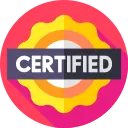FREE
daily Instructor: Dr. Carol EllisCourse Overview
Mastering Drum Programming and Sequencing
Advanced Drum Selection and Sound Design
- Understanding the nuances of different drum samples: Explore the characteristics of classic drum machines (808, 909, LinnDrum) and their applications in rap music.
- Layering drum samples: Learn techniques for combining multiple drum sounds to create unique and impactful drum patterns. This includes understanding frequency ranges and using EQ to create separation and clarity.
- Creating custom drum sounds: Utilize synthesizers (e.g., Serum, Massive) and samplers (e.g., Kontakt, Battery) to design original drum sounds from scratch. This covers synthesis principles like oscillators, filters, and envelopes, specifically tailored for drum sound design.
- Utilizing drum processing techniques: Master compression, EQ, saturation, and transient shaping to enhance the punch and presence of drum sounds. Understand different compressor types (e.g., FET, VCA, Optical) and their impact on drum character.
Advanced Sequencing Techniques
- Programming realistic drum patterns: Learn how to mimic the feel of live drummers by incorporating subtle variations in velocity, timing, and groove. This involves understanding swing and shuffle patterns and applying them effectively.
- Creating complex rhythmic variations: Explore polyrhythms, odd time signatures, and syncopation to add complexity and interest to drum patterns. Learn how to use step sequencers and MIDI editing tools to create intricate rhythms.
- Utilizing ghost notes and fills: Incorporate subtle ghost notes and dynamic fills to add realism and groove to drum patterns. This includes understanding the placement and velocity of ghost notes to create a natural feel.
- Automating drum parameters: Control parameters like pitch, filter cutoff, and pan to create evolving and dynamic drum patterns. This involves using automation lanes in your DAW to create subtle or dramatic changes over time.
Developing Melodies and Harmonies
Understanding Music Theory for Rap Production
- Scales and modes: Learn to apply scales (major, minor, pentatonic) and modes (Dorian, Phrygian, Lydian) to create melodies and chord progressions that evoke specific emotions. Understand the characteristics of each mode and how to use them effectively.
- Chord progressions: Master common chord progressions used in rap music and learn how to create your own unique progressions using inversions, substitutions, and extensions. Understand the function of each chord within a progression and how to create tension and release.
- Melodic construction: Learn techniques for creating memorable and catchy melodies that complement the rhythm and energy of rap vocals. This includes understanding melodic contour, phrasing, and motif development.
- Harmonic rhythm: Understand how the speed and complexity of chord changes affect the overall feel of a song. Learn to use harmonic rhythm to create contrast and build tension.
Creating Compelling Melodies
- Utilizing sampling techniques: Learn advanced sampling techniques for creating melodic hooks and textures. This includes chopping samples, time-stretching, and pitching samples to create unique sounds.
- Synthesizing melodic sounds: Design custom synthesizer sounds for melodies using subtractive, FM, and wavetable synthesis. This covers the creation of leads, pads, and textures using various synthesis techniques.
- Using arpeggiators and sequencers: Employ arpeggiators and sequencers to create intricate and evolving melodic patterns. Understand how to use these tools to generate ideas and add complexity to your melodies.
- Adding depth and texture with effects: Utilize effects like reverb, delay, chorus, and distortion to add depth and texture to melodies. Understand how to use these effects subtly to enhance the sound without overpowering the melody.
Mastering Mixing and Mastering Techniques
Advanced Mixing Techniques
- Gain staging: Learn how to properly set gain levels for each track to optimize headroom and minimize noise. Understand the importance of gain staging throughout the mixing process.
- EQ and compression: Master advanced EQ and compression techniques for shaping the sound of individual tracks and creating a cohesive mix. Understand different EQ and compressor types and their specific applications.
- Stereo imaging: Use panning, stereo widening, and mid-side processing to create a wide and immersive soundstage. Understand the principles of stereo imaging and how to avoid phase issues.
- Reverb and delay: Utilize reverb and delay to create depth and space in the mix. Understand different reverb and delay types and their impact on the overall sound.
- Automation: Automate parameters like volume, pan, and effects to create dynamic and engaging mixes. Understand how to use automation to create movement and interest in the mix.
Mastering for Rap Music
- Understanding mastering principles: Learn the principles of mastering, including loudness maximization, EQ balancing, and stereo enhancement. Understand the goals of mastering and how it differs from mixing.
- Using mastering plugins: Master the use of mastering plugins like limiters, EQs, compressors, and stereo imagers to enhance the overall sound of a track. Understand the specific parameters of each plugin and how they affect the sound.
- Analyzing and optimizing for different platforms: Learn how to analyze and optimize your masters for different streaming platforms (e.g., Spotify, Apple Music) to ensure consistent playback quality. Understand the loudness standards of each platform and how to meet them.
- Creating different master versions: Learn how to create different master versions for different purposes (e.g., radio, streaming, vinyl). Understand the specific requirements of each format and how to tailor your masters accordingly.
Vocal Production and Processing
Recording and Editing Vocals
- Microphone selection and placement: Understand the characteristics of different microphones (e.g., condenser, dynamic, ribbon) and how to choose the right microphone for different vocal styles. Learn how to properly position the microphone to capture the best possible vocal performance.
- Recording techniques: Master techniques for recording clean and clear vocals, including proper gain staging, noise reduction, and monitoring. Understand the importance of creating a comfortable and inspiring recording environment.
- Vocal editing: Learn advanced vocal editing techniques, including pitch correction, time alignment, and noise removal. Understand how to use tools like Auto-Tune, Melodyne, and iZotope RX to polish vocal performances.
- Comping vocal takes: Learn how to comp together the best parts of multiple vocal takes to create a seamless and compelling performance. Understand the principles of comping and how to choose the best takes for each section.
Vocal Processing and Effects
- EQ and compression for vocals: Master advanced EQ and compression techniques for shaping the sound of vocals and creating a balanced mix. Understand how to use EQ to enhance clarity and intelligibility and how to use compression to control dynamics.
- De-essing and noise reduction: Learn how to use de-essers and noise reduction plugins to remove unwanted sibilance and noise from vocal tracks. Understand the principles of de-essing and noise reduction and how to use these tools effectively.
- Reverb and delay for vocals: Utilize reverb and delay to create depth and space in the vocal mix. Understand different reverb and delay types and their impact on the overall sound.
- Creative vocal effects: Explore creative vocal effects like distortion, chorus, and flanger to add character and texture to vocals. Understand how to use these effects subtly to enhance the vocal performance or more dramatically to create unique sounds.
FlashCards
External Resources
Add-On Features
Expert Instructor
Get live study sessions from experts
Honorary Certification
Receive a certificate before completing the course.
Currency
Sign in to change your currency
I'm not ready to enroll?
Tell us why, because it matters.
Enroll With a Key
Course Benefits
Get a Job
Use your certificate to stand out and secure new job opportunities.
Earn More
Prove your skills to secure promotions and strengthen your case for higher pay
Learn a Skill
Build knowledge that stays with you and works in real life.
Lead Teams
Use your certificate to earn leadership roles and invitations to industry events.
Visa Support
Use your certificate as proof of skills to support work visa and immigration applications.
Work on Big Projects
Use your certificate to qualify for government projects, enterprise contracts, and tenders requiring formal credentials.
Win Partnerships
Use your certified expertise to attract investors, get grants, and form partnerships.
Join Networks
Use your certificate to qualify for professional associations, advisory boards, and consulting opportunities.
Stand Out Professionally
Share your certificate on LinkedIn, add it to your CV, portfolio, job applications, or professional documents.
Discussion Forum
Join the discussion!
No comments yet. Sign in to share your thoughts and connect with fellow learners.
Frequently Asked Questions
For detailed information about our Rap Music Production course, including what you’ll learn and course objectives, please visit the "About This Course" section on this page.
The course is online, but you can select Networking Events at enrollment to meet people in person. This feature may not always be available.
We don’t have a physical office because the course is fully online. However, we partner with training providers worldwide to offer in-person sessions. You can arrange this by contacting us first and selecting features like Networking Events or Expert Instructors when enrolling.
Contact us to arrange one.
This course is accredited by Govur University, and we also offer accreditation to organizations and businesses through Govur Accreditation. For more information, visit our Accreditation Page.
Dr. Carol Ellis is the official representative for the Rap Music Production course and is responsible for reviewing and scoring exam submissions. If you'd like guidance from a live instructor, you can select that option during enrollment.
The course doesn't have a fixed duration. It has 26 questions, and each question takes about 5 to 30 minutes to answer. You’ll receive your certificate once you’ve successfully answered most of the questions. Learn more here.
The course is always available, so you can start at any time that works for you!
We partner with various organizations to curate and select the best networking events, webinars, and instructor Q&A sessions throughout the year. You’ll receive more information about these opportunities when you enroll. This feature may not always be available.
You will receive a Certificate of Excellence when you score 75% or higher in the course, showing that you have learned about the course.
An Honorary Certificate allows you to receive a Certificate of Commitment right after enrolling, even if you haven’t finished the course. It’s ideal for busy professionals who need certification quickly but plan to complete the course later.
The price is based on your enrollment duration and selected features. Discounts increase with more days and features. You can also choose from plans for bundled options.
Choose a duration that fits your schedule. You can enroll for up to 180 days at a time.
No, you won't. Once you earn your certificate, you retain access to it and the completed exercises for life, even after your subscription expires. However, to take new exercises, you'll need to re-enroll if your subscription has run out.
To verify a certificate, visit the Verify Certificate page on our website and enter the 12-digit certificate ID. You can then confirm the authenticity of the certificate and review details such as the enrollment date, completed exercises, and their corresponding levels and scores.
Can't find answers to your questions?
Certification Guide

Complete the Course
Begin the course by selecting your experience level in the course content section:
Beginner: Master the material with interactive questions and enough time.
Intermediate: Get certified faster with hints and balanced questions.
Advanced: Challenge yourself with more questions and less time

Earn Your Certificate
To download and share your certificate, you must achieve a combined score of at least 75% on all questions answered.





